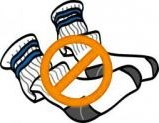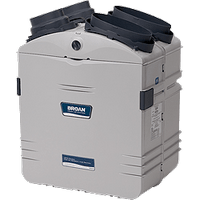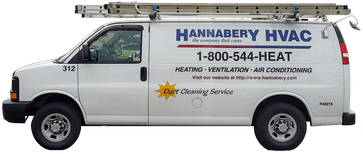UV Treatment Systems Can Help!
Kills Mold & Bacteria Dead...
Call Us Today!
UV rays kill microorganisms that breed in drain pans and A/C coils and helps eliminate "Dirty Sock Syndrome".

"Dirty Sock Syndrome" is caused by the growth of microorganisms and bacteria on the indoor coil and the drain pan of the Heat Pump. All Summer long, moist cooling coils can serve as an ideal breeding ground for mold. Water and organic debris sitting in the drain pan can also form a fertile garden of microorganisms. But why is it only with Heat Pumps?
When heating season starts, hot air furnaces have a heat exchanger which puts out enough heat to kill the microbes that thrived on the damp evaporator coil and drain pan. Heat Pumps on the other hand, put out much lower temperatures; just warm enough to heat up the organic debris, which releases the spores and toxins into the air and produces the so-called "Dirty sock smell". It can be very pungent and is said to resemble “sweaty feet” or a smell similar to that experienced in a locker room.
"Dirty Sock Syndrome" is an indoor air quality problem. It's not caused by or prevented by the air conditioning and heating equipment/heat pump system. This problem must be properly recognized and addressed by the homeowner in cooperation with an HVAC contractor. If your home has musty, stale odors you may have a poor indoor environment. Poor indoor air quality can increase the chances of getting "Dirty Sock Syndrome".
Having the coils, drain pan, and drain line cleaned regularly may help solve this problem. An ERV/HRV - Fresh Air Ventilation System can also help - more on that later. But installing a UV System is the best answer. UV-C Ultraviolet Air Treatment Systems zap airborne germs and prevent mold spore growth on air conditioning coils.
About Ultraviolet Radiation (UV-C)...
The treatment of indoor air with ultraviolet radiation has been successful in health care facilities, food processing plants, schools, laboratories and other applications. It is a safe, silent, and proven method of improving indoor air quality.
The Sun has been nature's Outdoor Air Purifier for years. Scientists have known that one of the most effective air purifiers is natural sunlight. Not the light we see when we look out the window, but the invisible "C" band, ultraviolet rays that make up part of the sun's light spectrum. The sun's UV-C rays act as a natural outdoor air purification system, inhibiting the growth and reproduction of bacteria,viruses, fungi and molds. However, this natural process does not occur indoors.
Ultraviolet radiation (UV-C) replicates the natural outdoor purification system of the sun by destroying the allergy and disease-causing microbes living and multiplying in indoor air. By itself, or in combination with a quality filter, it is the most effective way to reduce airborne bacteria and the health risks they represent.
Indoor air in a typical HVAC system will be recirculated over 50 times a day. With a UV Air Treatment System, cumulative exposure can be very effective in controlling indoor bacteria and preventing the growth of new microorganisms. UV rays also kill germs that breed in drain pans and A/C coils.

Mold and What You Need to Know About it...
Homes are built tighter and insulated better than ever, saving us money on energy bills. But the construction methods and materials that keep modern homes more energy-efficient than older, draftier houses can have a troublesome side effect: Many of today's houses are too airtight. Without adequate air circulation and dehumidification, moisture can build up in a home's hidden places; inside walls, under floors, above ceilings, behind shower walls, allowing mold to form.
Mold can wreak havoc with human health. A 1999 Mayo Clinic study found that mold was the culprit in nearly all chronic sinus infections. Other recent studies have implicated mold as a factor linked to a tripling of the asthma rate over the past 20 years. In our homes, we trap pollutants, such as the chemicals released from carpets and cleaning products, radon gas, auto exhaust, emissions from combustion appliances, and more. Indoor humidity levels that are too high, or too low, also can affect the well-being of occupants, and the durability of the home or building itself.
According to the EPA, the ideal level of humidity is 30% to 50%. A whole house dehumidifier, with a fresh air exchange option is a good combination. Fresh air exchangers, known as Energy Recovery Ventilators (ERV) or Heat Recovery Ventilators (HRV) are also available for different applications. Exchanging fresh outdoor air with stale indoor air is important to a healthier home.
ERV/HRV Systems

ERV's and HRV's allow you to replace stale and contaminated air with fresh air in the most demanding installations. That's especially important in newer, tightly-built homes.
We install ERV/HRV - Fresh Air Ventilation Systems...
A clean house, with a high quality filter system, changed regularly, is the first line of defense. Most air filters do not trap tiny particles of mold spores, viruses and bacteria. It is important that the evaporator coil, drain pan and drain lines are clean. Annual cleaning of the coil, drain pan and drain lines is important because there may be some air bypass of the filter. But again, a properly designed and installed UV Air Treatment system is the best answer!
UV Air Treatment Systems

An Ultraviolet (UV-C) Air Treatment System kills a high percentage of airborne bacteria and surface mold passing by the light, and can help to eliminate "Dirty Sock Syndrome".
We install Honeywell UV Air Treatment Systems...
How Comfortable Do You Want To Be?
Call or click below
to receive your...
[Must be in our service area]

